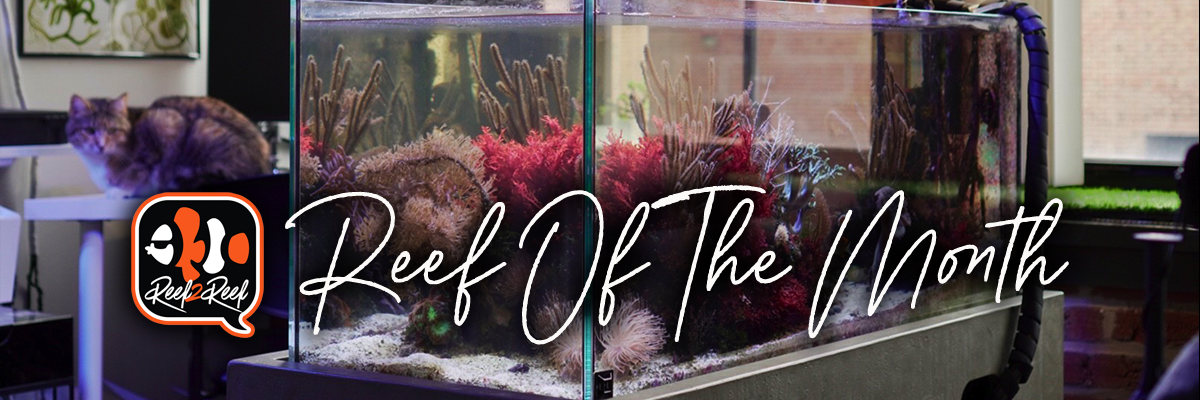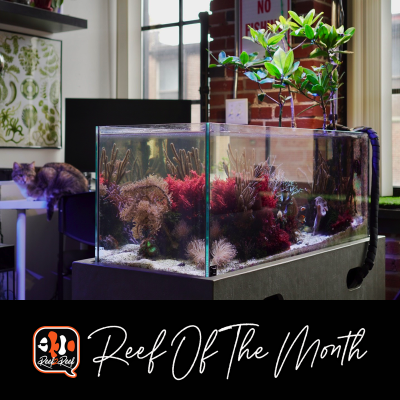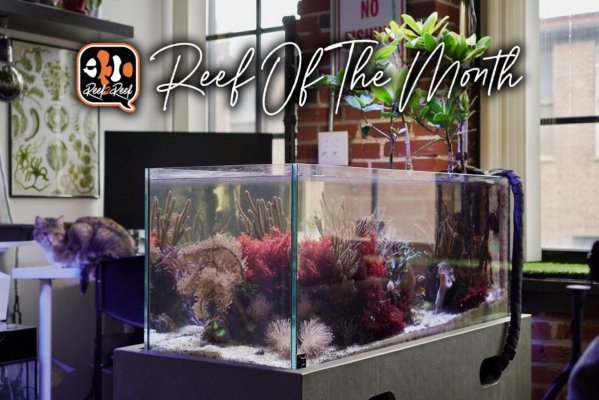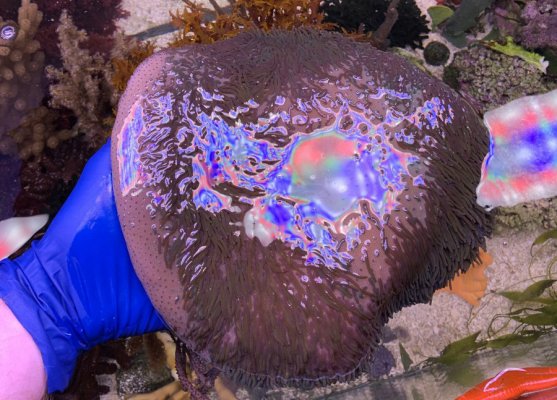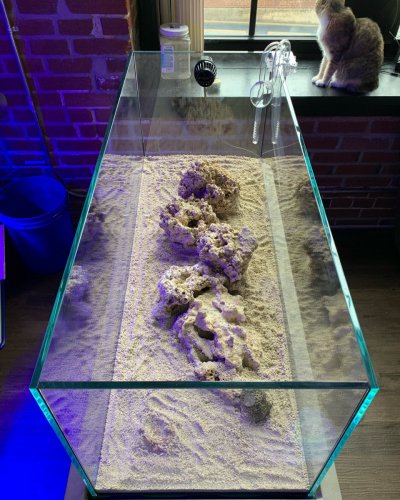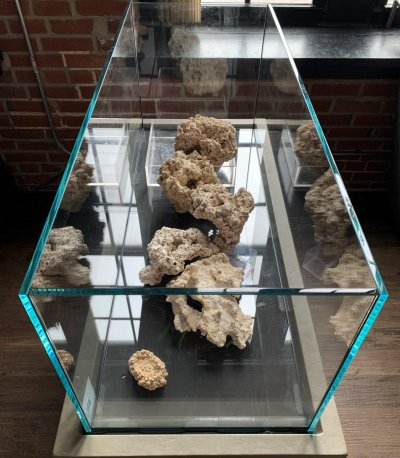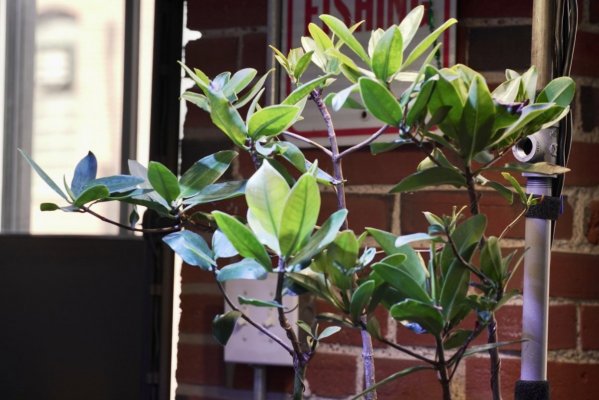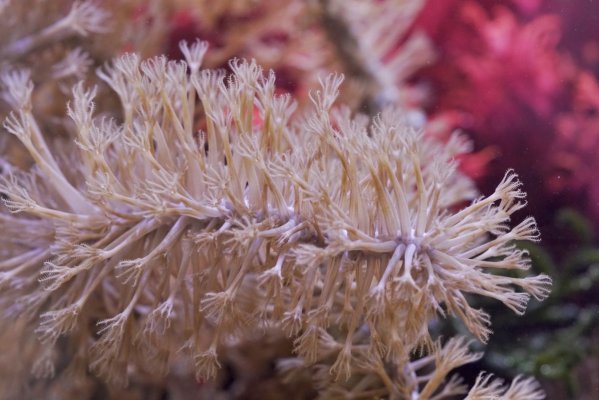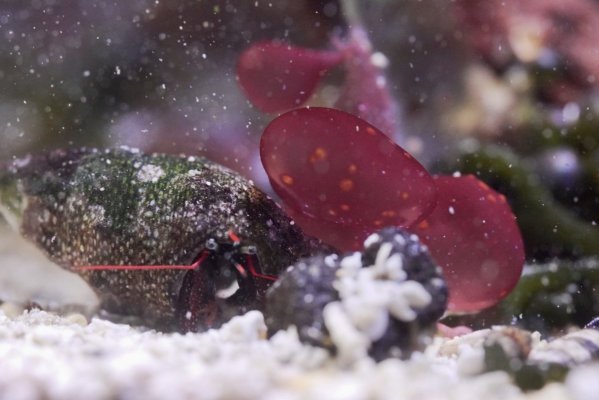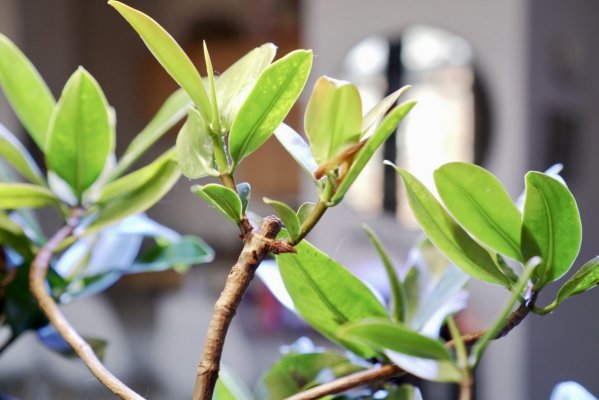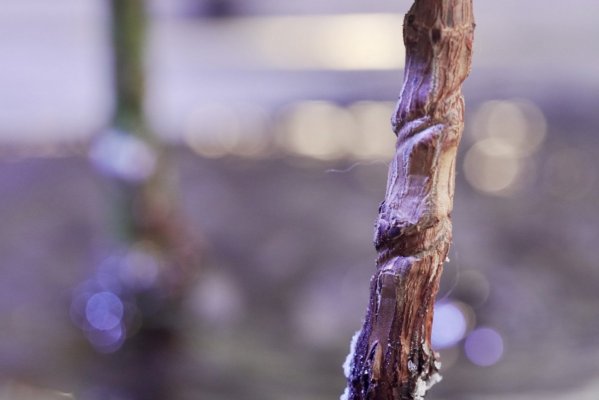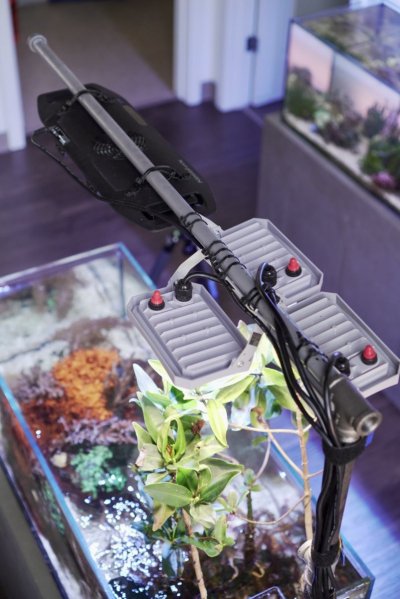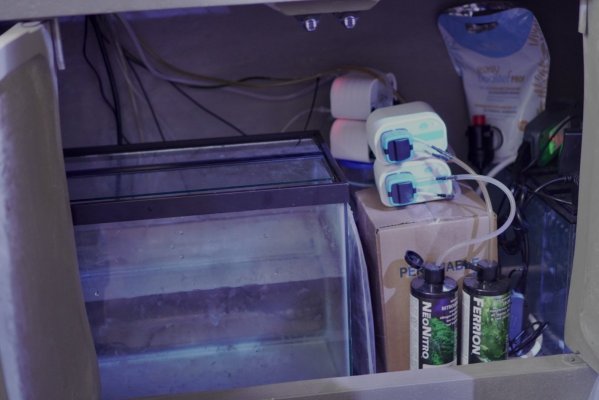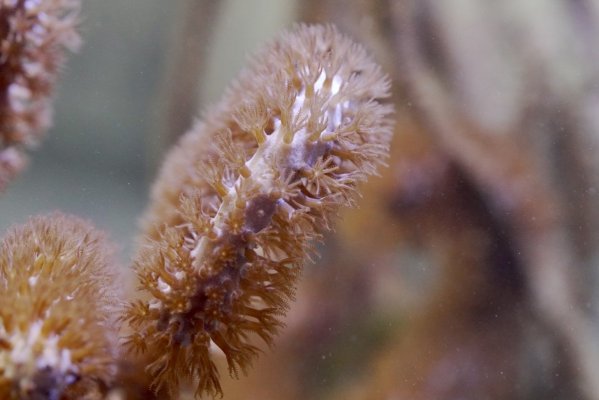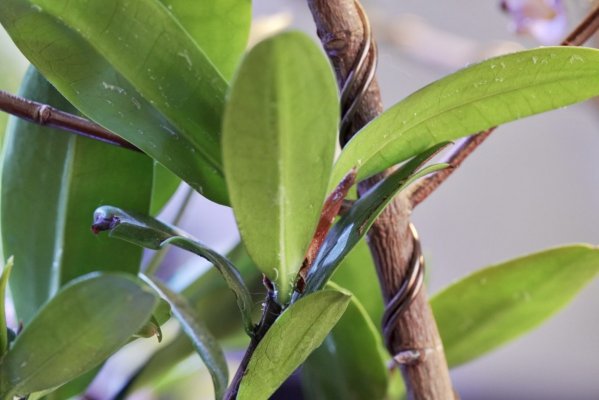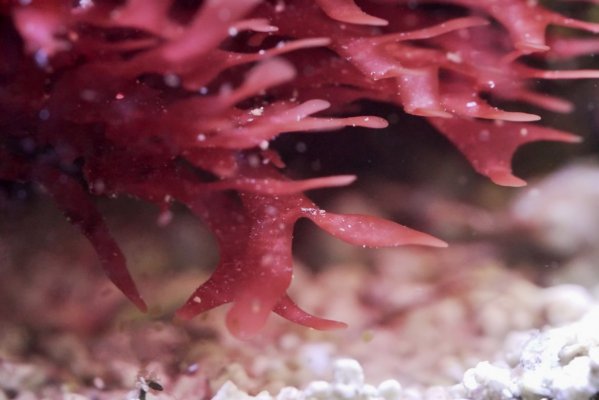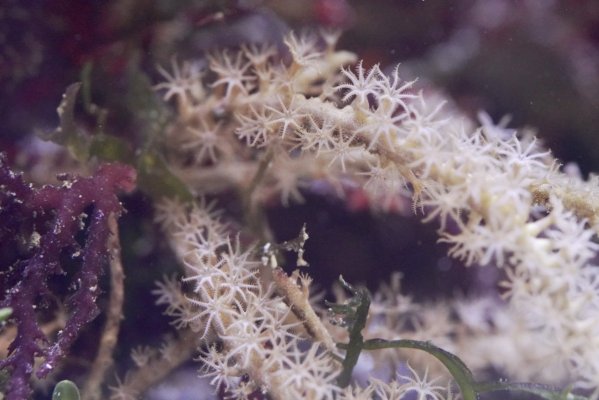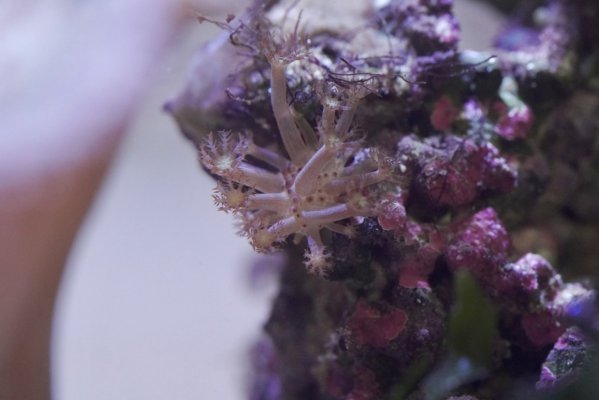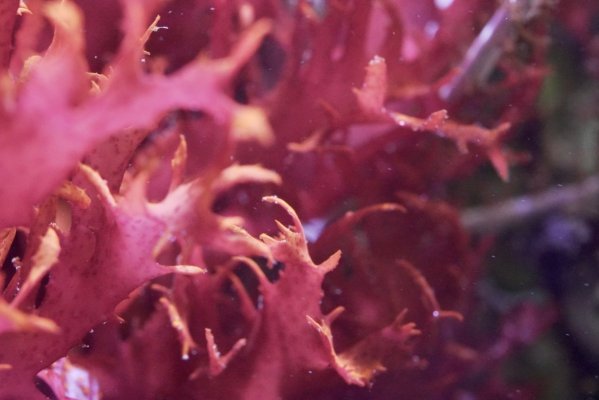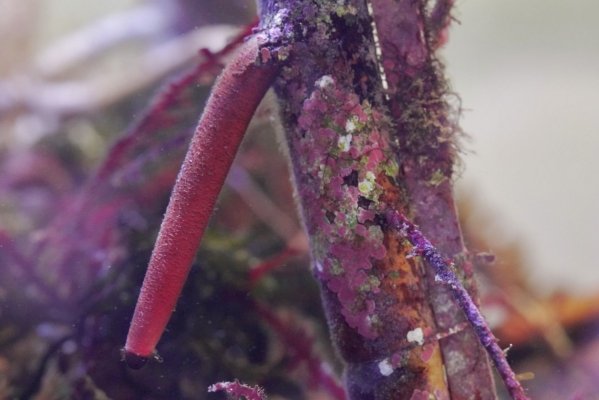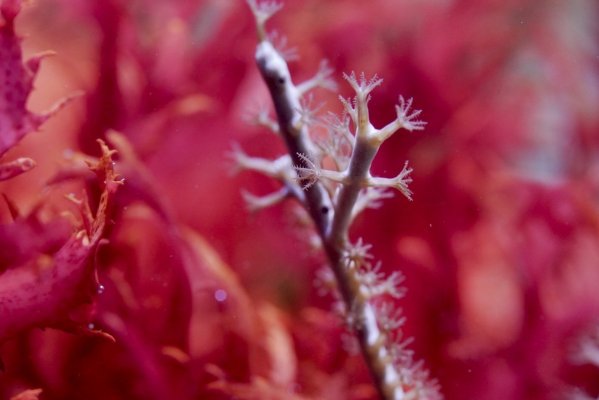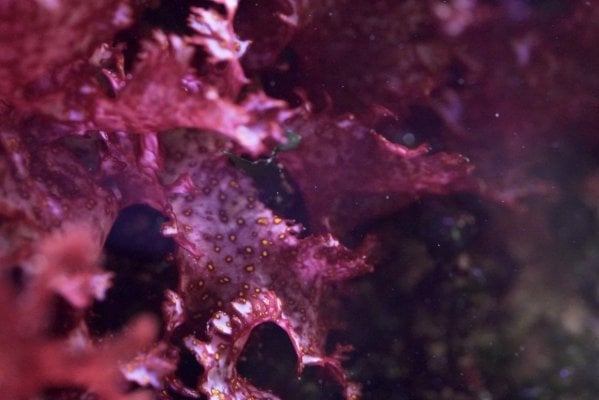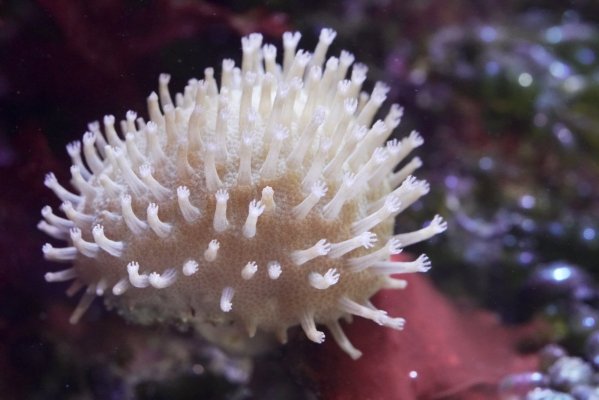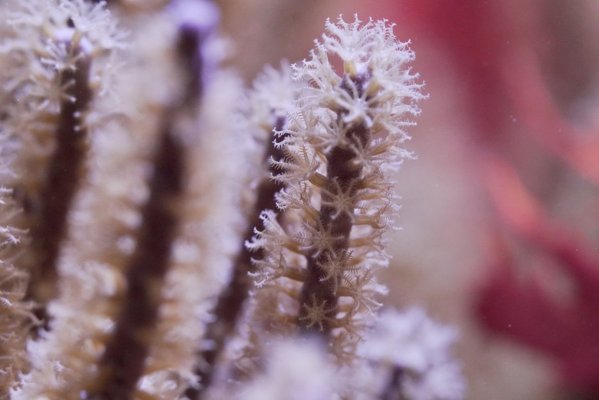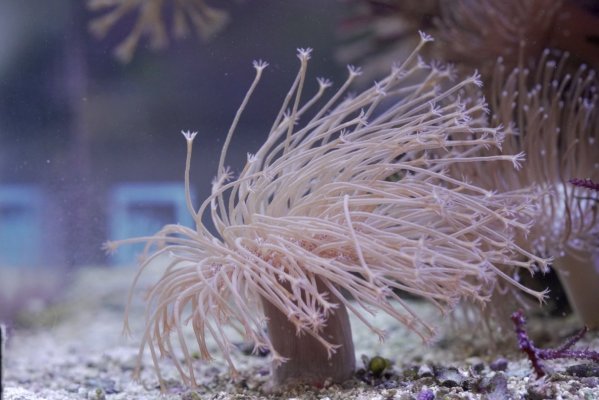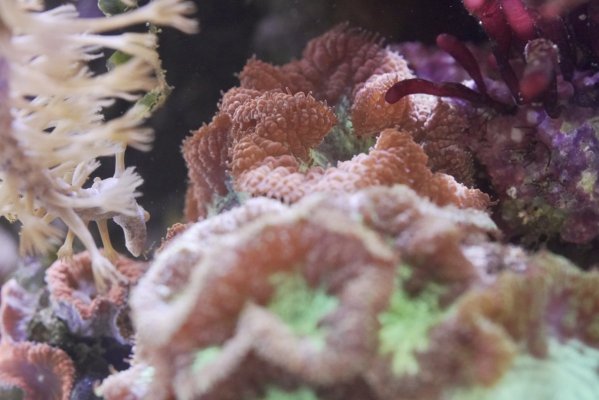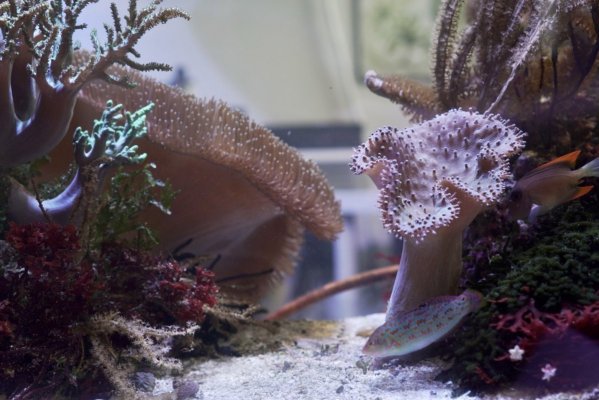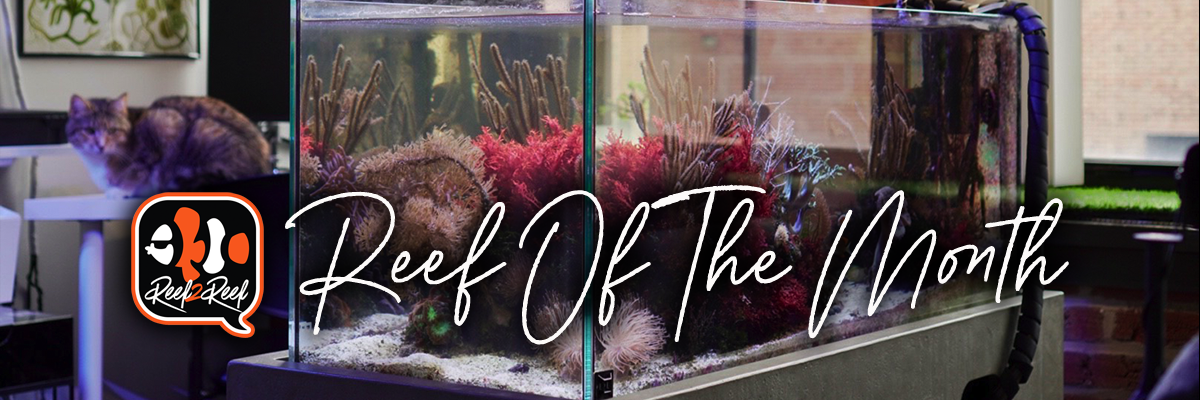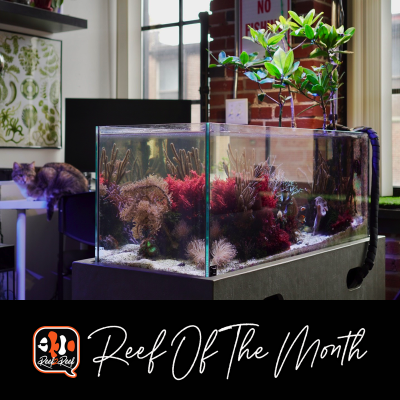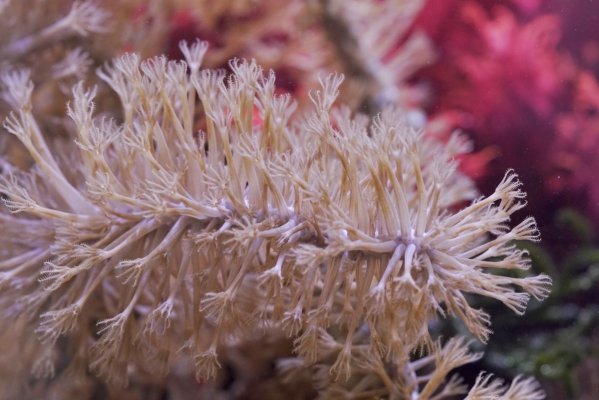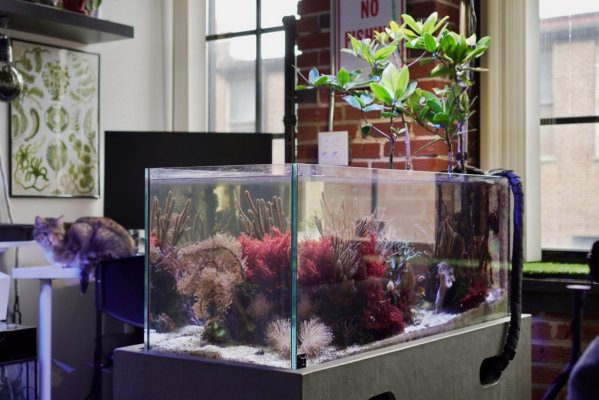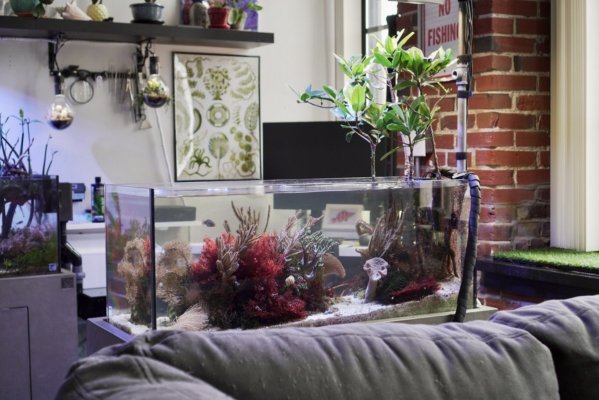Introduction:
Hello all! First off, I want to thank Reef2Reef for picking my reef tank as May’s Reef of the Month! I have been following along the Reef of the Month winners for years and can say the previous winners have some incredible setups. I'm honored to be selected from the hundreds of thousands of beautiful setups there are in the world and compared to the caliber of previous Reef of the Month winners!
Let me introduce you to my Coastal Lagoon tank! After a good friend of mine, Max, introduced me to Scott from SR Aquaristik at the first Aquashella Chicago, a vision for this tank started to take form. Scott showed me the incredible stand design that he was about to bring to the market and I loved how the different GFRC was from any other stand I’ve ever seen. Also, it would mesh well with the new aesthetic of my apartment.
Ever since dipping into the saltwater side of the hobby I have become fascinated with Caribbean style tank setups, especially Julian Sprung’s. I started hoarding all species of gorgonians and macroalgae that I could get my hands on. And what’s a Caribbean style tank without mangroves?! I began this coastal lagoon with 13 mangrove trees. Of the initial 13 mangroves that were added to this tank, only one has survived to this day. I didn’t know what I did wrong, so I began to research more information on red mangrove care. Julian’s pdf guide was extremely helpful and some forum posts of other people's experiences helped me gain more understanding about mangrove care and their addition to saltwater tanks. Im very thankful to have an LFS that knows I like mangroves more than anyone they know locally, and they contact me when they conducted a break down of a 10-year-old system. That individual was growing some beautiful mangroves in a refugium tank attached to their main display. The macroalgae they had in that display refugium was growing all over the mangrove trunks. It couldn’t have been a better fit for my setup. I was extremely nervous transplanting them into my system. Almost a year later, the mangroves are putting out some impressive prop roots!
The coastal lagoon just hit its two year milestone and it’s evolved a ton since I first set it up. I do have a build thread on Reef2Reef (Inland Reef's Coastal Lagoon) if you are interested in seeing more of the initial setup. The build thread is picture heavy as that’s what I enjoy the most in build threads. If you’re on Instagram, you can follow along with this reef tank and my two other setups at @inland_reef. I hope you all enjoy this tank as much as I do! Feel free to ask any questions you have that I may not have answered below.
- Display tank: SR Aquaristik 42-gallon Low iron rimless aquarium. The tank is 39” long by 16” wide by 16” tall.
- Glass or Acrylic: Glass
- Stand: SR Aquaristik glass fiber reinforced concrete (GFRC) stand
- Sump: No sump; it's kind of treated like a large fish bowl. Haha!
- Protein skimmer: No skimmer
- Carbon/phosphate filtration: Aquachar carbon in a mesh bag
- Return pump: No return pump. I'm using the XP Aqua Sumpless ATO to allow me to have a sensor in the tank without it getting tripped by the sunlight.
- Water circulation: 2 Ecotech MP10s
- Lighting (display): For 2 years the tank was lit by a Twinstar 900sp Freshwater Planted Led light. Recently I switched to a Kessil AP9X to allow me to mount the tank lighting higher.
- Calcium/alkalinity/magnesium dosing equipment: Kamoer X1 Bluetooth
- Auto top-off: Smart Micro Ato with 10-gallon PetCo tank as my reservoir
- Heating/cooling: BRS 200w titanium heater with their heater controller
- System control: I am the controller for now. This may change in the future.
- Any other details: My lighting mount is completely custom. I used plywood, 2x4”s and black steel pipe that got painted grey. A piece of plywood spans the total length of the stand and extends out the back 3 1/2”. I stacked and wood glued 3 2x4’s together and then it got wood glued to the base piece of plywood. From there I used a flange to connect the steel piping to the 2x4s. I used a 3/4” diameter pipe up to the height that I want to hang the light from and then ran a single 1/2” pipe over the tank. By creating a “C” with my lighting structure, I was not concerned about there being too much flex and bending as long as the lighting hanging from the 1/2” pipe were not too heavy. I have really tall ceilings so not exactly the easiest to mount and hang these lights from above which is why I had to get creative.
I hate seeing equipment in tanks, especially peninsula tanks on the far viewing pane. The goal was to make sure there was enough flow for food/phytoplankton to be spread throughout the tank while making sure that detritus does not collect on the macroalgae. Ecocotch MP10s were the perfect fit for pushing water down to the other end and around the aquascape. They are set to alternating long pulse mode (roughly 80% speed) to create a turbulent gyre effect.
Water Parameters:
- Temp: 76 with a temp controller to keep the swing within roughly 1 degree.
- pH: 7.9-8.2 (taken with a hand held probe as I do not monitor with a controller)
- Specific gravity: 35.0
- NO3: I try to keep it around 15-20ppm.
- Ca: Have not tested this one since the tank was set up.
- Alk: Between 8.0 to 8.5 is the range I tend to stay within.
- Mg: Have not tested this one since the tank has been set up.
- PO4: I’m currently sitting about 0.08 and 0.1ppm.
- Ammonia and nitrites: These are both zero to the best of my knowledge since the initial cycle.
Fritz Blue Box. The reason I use this brand of salt is it’s always in stock at my local fish stores and it mixes up close to where I keep the tanks alkalinity at. If I need to do an emergency water change I don’t have to worry about a huge fluctuation of alkalinity.
What kind of rock did you start with?
I started with dry rock. This was the first tank where I didn’t use live rock.
Here's the rockwork before everything else went into the tank.


What is your substrate?
Caribsea Fiji pink sand. For the mangroves, I have miracle mud in an acrylic tray. The tray is roughly 12” x 12” x 3” and is capped by the sand so it doesn’t blow around.
Calcium/Alkalinity/Magnesium Summary and Objectives:
Stability. I do not have a huge demand from my mostly soft coral dominant tank, but stability is still the goal.
What and how do you dose for the big 3 (alk/cal/mag)?
I dose with Tropic Marin All for Reef and have used it on this tank since the start. Once I got it dialed in, it’s been a breeze to keep my alkalinity stable around 8.0-8.5. I’ve really appreciated the introduction of the powdered version of All for Reef so I can mix it myself. The premixed liquid can be a little expensive especially if you’re using it on a higher demand tank.
My dosing regimen is more like micro dosing due to being a small system and really a small demand. Currently I am dosing less that 1ml a day on this system. With the Kamoer, I have it broken up into 4 doses, two being 0.2 ml and two being 0.3 ml.
In a macroalgae tank, how important are these 3? In what ways is monitoring these different than a traditional reef tank?
In a macroalgae tank, this big three are still important as some types of macroalgae utilize those elements to grow just as coral skeleton would. I have listed above that I haven’t tested for calcium or magnesium on this tank but my thought is if my alk is stable than my equal part calc dosage should keep my calcium in check. As for magnesium, there is some being dosed in the all for reef solution but on such a small system, basic water changes would also suffice. I would monitor for the major three element depletion the same way you would monitor on any other type of reef tank. I use the Hanna checkers for my testing purposes.
Are you dosing anything else for your reef health (carbon dosing, aminos, etc.)?
I'm dosing Brightwell's NeoNtitro and NeoPhos to maintain the higher nutrient levels in the system for the macros to grow and thrive. I've noticed when the nitrates and phosphates slip towards the lower ends of the range, the macroalgae tends to suffer.
Lighting Summary and Objectives:
There are two lighting objectives I have for this tank. One is to light the tank itself for the inhabitants in the water column and the other is making sure there is enough light on the old mangrove trees that are well above the surface of the water column.
I haven’t had the kessil AP9X over this tank for very long so I can not give too much insight on that schedule but I matched the Kessil scheduled to the best of my ability to the one I was running with the Twinstar 900sp. The Kessil is a little more of crisp white (in my opinion closer to the 10-12K) than the warmer white of the Twinstar 900sp (6700K).
For the mangroves, I have opted for 3 cheap Home Depot 1600 lumen 6500k flood lights. I was not expecting to get mangroves that were taller than my current lighting solution so this was my quick solution at the time and have been working great. In the future I may invest in more Kessils to light them. I have sort of decided that if and potentially when I can get my dream tank discussed below, it would be helpful to have all matching lighting from a single brand.
Lighting Photoperiod:
- Display tank: I'm running 8 hours of peak lighting with a one hour ramp up and ramp down. The flood lights over the mangroves come on after the first hour ramp up and turn off before the tank starts to ramp down for the night.
From my initial research I did 5 years ago, people wanted low or no nitrates or phosphates in their systems. I think that has changed quite a lot in the last couple years for typical mixed reef systems. For my setup, I want my water quality to have higher nutrients. Low nutrients for a macroalgae system will make keeping these species very difficult or cause macros to go sexual. This limits my choice of corals that will respond well to the higher nutrients in the tank. This is why I pair macros with soft corals. They seem to be the group of corals that doesn’t mind higher nutrients in the water column. Some even seem to grow better under these conditions.
What is your export strategy?
Macroalgae, mangroves and water changes. I do not want the tank to be too sterile where the macroalgae and mangroves do not have the nutrients to thrive, but I also want to make sure that there is not an excess of nutrients where nuisance algae starts to grow
What is your maintenance routine?
Daily:
- Daily: Scrape the glass as its needed and feed the fish (they love to eat haha). I'll check on the mangroves to cut any dying leaves off or pick out the dried up shell that falls off after a new pair of leaves.
- Bi-monthly: To start off my bi-monthly water change, I'll scrape the glass and throw in some fine particulate food like reef roids. Perfect opportunity for an extra feeding. Since there is minimal mechanical filtration, I'll work a small pump around the rock work to dislodge any detritus buildup before syphoning out 5 gallons of saltwater and replacing it with freshly mixed water. I'll fill up the 10gal ato reservoir, make sure the dosing element containers are not getting low, sit back and enjoy.
- Other: Mangroves like to grow upward, especially towards the light source. I have adopted a sort of bonsai approach to caring for my mangroves. With 1.5mm anodized aluminum wire, I will double or triple up depending on the trunk or branch size to add flow and direction to the mangrove. I have to monitor these wires because as the tree grows, it will start to bite into the wire that is forming its direction. It can cause scarring that is not really appealing visually.
- Halichoeres timorensis (Timor Wrasse named Pixel)
- Pair of Amphiprion sandaracinos (Orange Skunk Clownfish)
- Ctenochaetus tominiensis (Tomini Tang)
- Cryptocentrus cinctus (Yellow Watchman Goby named Carl - my first and oldest fish, ~8-9 years old, that came with the biocube I bought off a fellow reef keeper to get into this hobby)
- A bunch of dwarf cerith snails (great snails for macroalgae tanks)
- A bunch of nassarius snails
- A few red/blue leg hermits
Soft Coral
- I love long tentacle toadstools. I have three variations of this coral. My oldest and largest Sarcophyton sp. has been in my possession for almost four years now. I've fragged it for the first time when it reached the width of a 5 gal bucket lid. It's been about a year and it's pretty close to being that same size again! I was super excited to add Remy’s (@BahamaLlamaCoral) weeping willow toadstool to my collection. Lastly, a more recent addition was a long tentacle variation that I picked up from my LFS. Excited to see its progression.
- Heliopora coerulea (Blue Ridge Coral) It's typically thrown into the soft coral category so I’ll list it here, but I was super excited to get my hands on this fairly uncommon coral.
- Green Sinularia sp.
- Sarcophyton sp. (I've heard this called the Jester Polyp Toadstool for its pronounced polyps.)
- Possible Sarcophyton elegans (just got this frag from a good friend that is shutting down his tank. He’s grown this colony for almost 10 years. It always looked very strange under full blues in his tank. When I added it to my tank under more full spectrum lighting, it comes off more yellow so I'm excited to see what comes of it.
- Red Discosoma
- Ricordea yuma
Picture of the Sarcophyton sp. before fragging
Anemone
- Chicago Sunburst Anemone from my good friends at Global Reef Supply
- Muriceopsis flavida
- Pterogorgia anceps (purple)
- (2) Pterogorgia anceps (tan)
- Pterogorgia citrina
- Antillogorgia bipinnata (tan)
- Eunicea flexuosa
- Pinnigorgia flava
- Corky Sea Finger (Maybe Briareum sp.)
- Eunicea sp.
- I really like Blastomussa. I think I have 5 different color morphs
- Gracilaria mammillaris
- Gracilaria hayi
- Halymenia durvillei (dragons breath)
- Halymenia maculata
- Dictyota sp.
- Codium sp. (large version)
- Codium sp. (small version)
- Caulerpa prolifera
- Caulerpa brachypus
- Botryocladia skottsbergii (not sure on this classification based on quick research)
- Valonia sp.
- Bryothamnion sp.
- Gelidium sp.
- Unknown Species (Possibly Solieria seen above the Blastomussa in my photo)
- Unknown species (Red Fern Macro growing next to my prop root in my photo)
Fish and Coral Feeding:
Fish feeding is a daily routine. I have completely switched over from frozen food to SR Aquaristik flakes and pellets. There was two reasons for this: 1) Feeding flake and pellet food is easy--no real prep needed, and 2) when I go out of town for work or vacation, setting up an auto feeder doesn’t mean I have to train my fish to eat flake or pellets before I leave and hope they eat it.
For the corals, I dose EasyBooster Phytoplankton twice a day (midday and midnight). As I listed above, during my bimonthly maintenance, I'll feed a pinch of Reef Roids before I syphon out the water.
For macroalgae, I'll dose Brightwell’s Cheatogro if I start to see the colors of the green macros fading and add Brightwell's Ferrion if I see the red macros fading in color or some spotting happening in the mangrove leaves.
How did you decide what to keep in your tank?
I had been collecting gorgonians and macroalgae for a few years prior to moving to my new apartment and thought they needed a tank that better represented their beauty. The photosynthetic gorgonians and certain species of macroalgae get lost under super heavy blue light tanks and really need a full spectrum environment for their true beauty to show.
Any stocking regrets?
I regret introducing bubble algae into the tank but who in this hobby doesn’t. Other than that really no regrets with this tank stocking.
Any fish, invert, or coral you will NEVER keep?
Thats a good question. Not that I can think of offhand. As hobbyists, I feel like we want to keep anything we possibly can, but for me it’s a matter of can I give the care requirements necessary for the inhabitant to not only survive, but thrive. My fiancé loves mandarin dragonets but I refused to get a pair until I felt comfortable about creating an environment that would allow them to hunt and eat naturally (copepods/amphipods). After 5 years, I finally created what I think is the perfect environment and added a pair of dragnets to one of my other systems.
What do you love most about the hobby?
I love that through this hobby, I have met so many people that have become close friends. People that I have met in person and some that we chat over social media on a daily basis. I hope that I can meet these people one day at a reef show and get to see the beautiful worlds they create! The second thing I love about this hobby is that there is so much to learn. Every day I'm learning new things, such as new corals species (I prefer latin names - I get lost with all the common names and the renaming of corals) and new methodologies of reef keeping. I think this hobby needs to continue to evolve. There are methods that work and have created very successful systems for many people around the world, but there is still so much we don’t understand. I was listening to Rapping with Reef Bum and one of the guests brought up the need to understand the bacteria in our tanks and how this will be the future of reef keeping. I think this is where we need to realign the hobby back towards science and use the experts in those fields to work together towards solutions.
How long have you been doing this?
I have been keeping saltwater tanks for about 5 years.
Who was responsible for getting you into the hobby?
I grew up fishing with my dad and extended family which peaked my interest in fish. My dad had an aquarium when he was growing up so they eventually decided to get one for my brother and I. We picked out a betta fish which was properly named Bluey (guess the color... Haha) and the fascination of fish tanks took hold from there. I kept freshwater fish tanks all through college and even moved my tank from Southern Illinois to Chicago to Atlanta and then to St Louis. Once I got a more permanent career in St Louis, I decided it was finally time to take the plunge into saltwater. After a bunch of research, I bought my first tank. It was a used biocube that came with live rock, sand, and my oldest fish, Carl.
Who or what in the hobby most influences/inspires you?
I feel like he's a lot of hobbyist inspiration, but Julian Sprung has been my biggest influence for my tanks. I really enjoy his style and appreciation of corals under more full spectrum lighting, while creating an environment typical to what would be found out in the ocean. Another individual that has given me inspiration is a gentleman by the name of Marcelo Johan Ogata, @_bugdreamer_ on youtube and instagram. If you have not seen this account or watched his videos on youtube, you are missing out! He is an award winning underwater filmmaker and I used some of his footage to help me plan my aquascapes to make them look as natural as possible.
If you could have any tank, what size would it be and why?
My dream tank would 6 ft long by 30 inches wide by 20 inches tall. I would be able to super size this current setup to add a few more gorgonians, toadstools and macroalgae! I really like lagoon style setups and the additional width gives me more space to create a unique aquascape.
Favorite fish?
My favorite fish in my possession is my Timor Wrasse. It is an absolutely gorgeous fish. If I had to say favorite fish over all, it would be Centropyge interruptus. The LFS just brought one in and it was my first time seeing this fish in person. Wow! talk about a jaw dropping fish. I wish I could afford one. Hopefully after a few more years of captive breeding, the price will fall closer to what my budget can afford.
Favorite coral?
My favorite coral is my long tentacle toadstool. I've grown it from a small frag over the last 4 years.
Favorite macroalgae?
My favorite macroalgae is Haliptilon sp. Red fern macro is what I commonly call it. Really unique shape from a macroalgae that I have yet to see in any other species I’ve kept.
Favorite invert?
My favorite invert would be either a Purple Reef Lobster or Mantis Shrimp. I currently have a purple reef lobster in a pico tank and it is so cool to watch this invert hunt for food but I would love to care for a mantis shrimp one day!
How do you typically get over setbacks?
There are always going to be setbacks in reef tanks. We’re keeping mini oceans in a glass box. When problems come up, I assess the severity of the situation and determine the action that is needed (immediate or slow approach). If I’m unsure what is going on, I'll reach out to the great community that is around me for answers. There are a ton of people with a lot more knowledge and years in this hobby that can help me mitigate these setbacks. My most recent major setback was a few months back where my cat pulled the temp probe out of my other system. When I came home later that afternoon, the heater had gotten the tank temperature up to 100 degrees. You could feel the heat radiating of the glass before I even got close to the tank. I quickly started dropping bags of ice into the tank to try and bring the tank water down. Every coral in the tank died except for one sinularia coral which is still alive to this day. I'm shocked anything survived that event.
Have you faced any major challenges with this particular tank, and if so, how did you overcome?
Some would classify it as a major challenge if it were to happen in day a mixed reef or an sps dominated tank, but in a macroalgae tank, having a species go sexual is a fairly common thing. Due to the type of setup that I have created, macros going sexual (in my opinion) will not bring down the whole system. Some of my Caulerpa brachypus went sexual recently. With the release of gametes into the water column, the excess nutrients were most likely utilized by other macroalgae and possibly coral in the tank. I did a quick 10 gal water change and then let the Aquachar carbon do its job. After 24 hours, the tank water was crystal clear and if I hadn’t told you, I’d bet you wouldn’t have suspected a macroalgae had gone sexual.
What's the best thing you ever bought for your tank?
My tank equipment is fairly basic but the best thing I’ve bought for my tank has to be the Kessil AP9X. It was worth the investment to have the ability to mount the light higher so I can get a better view of the 10 year old mangrove trees without sacrificing par values to the inhabitants in the tank.
What are your future plans for improvement/upgrade of the tank?
I live in an apartment complex in the city of St Louis, so power outages are very rare but last year we had a little blip where the power cut for a few minutes. I have a battery backup for the MP10s, as that's the only form of flow and aeration for this system, so that kept my pumps running through the short outage. When the power came back on, I had to manually turn on my dosing pumps and the Twinstar light that was previously on the tank. This was another reason to move to the Kessil AP9X as I had another one lighting my other system and it came right back on when power returned. As this upgrade has already been completed, the next on my list is a dosing pump that has some sort of internal memory. That way if power is cut again while I’m out of town, the program will resume when the power comes back on.
Any special tips for success or advice you'd like to share with other reefers?
Let’s chat about mangroves! I get asked a lot of questions about my mangrove care and growth. I’ll caveat this and say I’m not an expert but after growing red mangrove trees over the last 4 years, this is what has worked for me.
Adding Red Mangroves to a Saltwater tank:
When you get your mangrove in from your LFS or online store, the first thing to check is if the trunk is squishy. If there is some give to the mangrove trunk when you give it a light pinch, I recommend not placing that mangrove in your saltwater tank. I would place it in a jar with some tap water and set that on a sunny windowsill. Squishy trunks are a typical indicator of salt stress. If the trunk is not squishy, let’s move onto the roots. Red mangroves use a pressure system to force salt out of their trunks. (I know there is a lot said about spraying your red mangrove leaves to wash away salt but you’ll see more build up on the trunk than you will on the leaves. If you live in a dry environment, I would recommend spraying the leaves as a way to maintain a higher humidity around the trees.) If there is any broken roots, I would recommend the same thing as above. Place it in a jar to let the roots heal before placing in a saltwater tank. If the roots look healthy, it’s time to place the mangrove in the tank! My favorite way to plant red mangrove trees in aquariums is to take an acrylic rod and tie the trunk to the rod and then push the acrylic rod into the rock work or the sand bed. If you try to jam the mangrove into the substrate, you have a higher chance of breaking the roots causing a most definite death of the tree over the next couple weeks. Secondly, red mangroves use prop roots to support themselves in the wild. If you place it immediately in the substrate, it will take a lot longer to get that prop root growth then elevating the tree and instigating the prop root growth to happen. One of my mangrove trees that survived the initial group added two years ago before I really knew a lot, ended up getting positioned right next to one of my MP10s. Over the past 2 years, the flow pushing against the mangrove has made it initiate some pretty incredible prop root growth to stabilize the tree against the flow. I no longer place mangroves right into the substrate when I add them to my tanks.
Trimming Mangroves:
Red mangroves like to grow upwards similar to all plants in the wild. The quicker they can get above the other plants they’re competing against the less likely they are to get shaded out. But in a home aquarium, you have the ability to help control it’s growth pattern. I know that mangroves take a long time to grow so this is a long term project. I treat my mangrove trees like bonsai trees. Ramification of the branches will create a more compact form. I’ll give an example of how I do ramification on a mangrove. First make sure that your tree is healthy. I don’t start cutting these trees right away. I may wait a couple months to let them settle into the system before I start cutting. If I were to start with a brand new red mangrove propagule, I would let the tree grow two pairs of leaves along the trunk. Mangroves are opposite leaf growing plants meaning that the leaves grow out opposing sides of the trunk in pairs. Once I have two pairs of leaves, I would chop the trunk back to roughly a 1/4-1/2” above the first pair of leaves. The reason I leave that 1/4-1/2” trunk above the first pair ensure that if there is any dieback, it will not affect the first pair of leaves. From there two new pairs of leaves will grow from right above both sides of the connection point of the pair of leaves still present on the tree. If you continue this trend of letting the tree grow two pairs and then ramifying, you’ll have a good looking tree in no time!
Wiring a Red Mangrove:
So now that you've started to ramify your tree, you’re getting more branches than can get light and some are starting to get shaded out. I noticed this happening on my mangroves so I had to react. I took another technique from the bonsai hobby and started wired the branches and trunk to begin to train the trees growth pattern. I won’t go into too much detail as a bonsai training video might be better to visualize how to do this technique on trees, but I’ll explain the tools that I use. I bought 1.5 mm anodized aluminum wire off of Amazon and I had a good set of tin snips to cut the wire into pieces. The size of the branch dictates whether I use a single wire or double, possibly triple up the wire to make sure the wire holds the branch or trunk in the direction you’re trying to move it. Go slow! Please don’t muscle the tree too much or you can potentially snap a branch. Also don’t forget to remove the wire after a period of time. You can see in one of my photos where the wire started to bite into the tree trunk as it grew.




